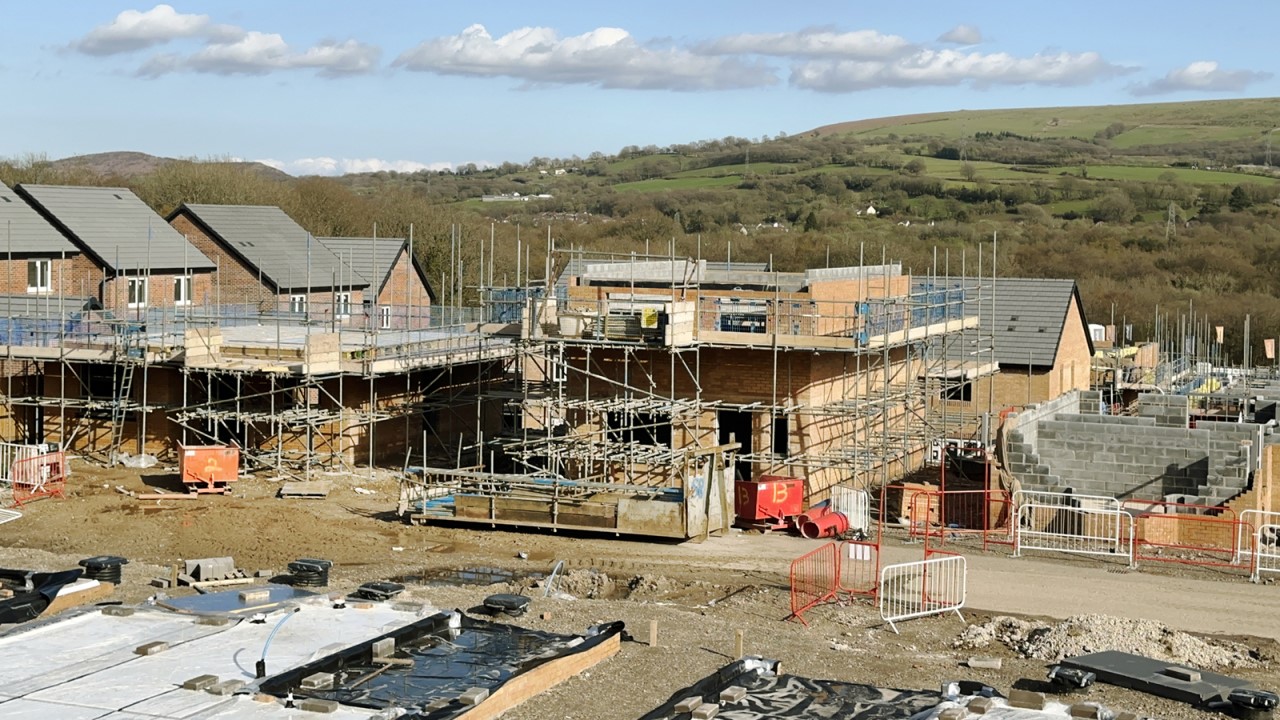
We could very well be in the golden age of brownfield resource availability, a short period that will be referenced as “the good old days.” In the not-too-distant future, local governments and community-based organizations will reflect upon their successful transition of brownfield liabilities into essential community assets, jobs, tax revenue, cleaner environments, sense of place, and healthier communities. Or, conversely, they will ponder why they did not act sooner when the “getting was good.”
One reason for this golden age is the once-in-a-lifetime financial and technical resources brought to communities through the American Recovery and Reinvestment Act, Bipartisan Infrastructure Law, and Inflation Reduction Act. The Environmental Protection Agency’s (EPA) Office of Brownfields and Land Revitalization (OBLR) is currently administering over $1.5 billion from the Bipartisan Infrastructure Law alone, creating a budget that is orders of magnitude larger than usual. These resources make their way to units of local government, quasi-public entities, nonprofit organizations, and academic institutions in the form of grant funding and technical assistance.
So, what is a brownfield and why should we care? Putting it simply, a brownfield is property whose path to redevelopment involves addressing contamination, or at least the perception of contamination. They are the large sites left behind when industry closes or moves elsewhere, the former gas station on the corner you wish would turn into a coffee shop, or the un/underused historic building that has seen better days.
EPA Definition of a Brownfield:
A brownfield is a property, the expansion, redevelopment, or reuse of which may be complicated by the presence or potential presence of a hazardous substance, pollutant, or contaminant.
From a local government management perspective, they are underperforming assets that should otherwise produce tax revenue that pays for essential public services. From a community-based perspective, they are the sites that might be exposing people to contaminants, degrade community identity, and do not serve a purpose. From a development perspective, they are often the only sites available, or they are in desirable locations, but they also represent financial and legal risk, so developers invest elsewhere.
Brownfields are found in large cities, small towns, remote locations, in city centers and suburbs across the country. Before you say, “We don’t have a brownfield problem,” think twice. It’s surprising what you find when you look for it. Also, try thinking about it from a different perspective. Consider brownfields the future location of the housing, business, parks, infrastructure, institutions, and amenities that make communities strong.
The financial and legal risk associated with brownfields is a fundamental obstacle to realizing redevelopment. There are simply unknowns as to the implications of contamination on the site, or possible contamination, that are impossible to account for until certain steps are taken.
The first step is to characterize the site through Phase I and Phase II Environmental Site Assessments. This work involves research into site history (Phase I) and taking samples of soil, soil gas, groundwater, and building materials (Phase II) to identify what contaminants are present (if any) and their concentrations. This data then informs the remediation plan that outlines steps necessary to accommodate the proposed development.
It is common that neither the property owner nor developer are willing nor able to pay for the site assessments, a situation leading to failed transactions and properties sitting idle, sometimes for decades. This is a primary area where public, quasi-public, and nonprofit organizations are in a strong position to acquire resources to fund assessments and bring technical expertise to bridge gaps in capacity, finance, and understanding to catalyze redevelopment. It is an excellent chance to put public-private partnerships into action.
Local governments, quasi-public, and nonprofit organizations are eligible for EPA brownfield grants that finance site assessments and leverage technical expertise to bridge gaps the private sector was unwilling/unable to. This is where we stop thinking of brownfields as “brownfields,” and start understanding that brownfields are about housing, economic development, environmental justice, jobs, tax revenue, public facilities, schools, environmental protection and restoration, and resilience to climate, economic, and social vulnerabilities.
Brownfield revitalization is a direct way to realize the goals outlined in your plans, from comprehensive plans to housing plans, watershed restoration and beyond. A keystone resource available to serve this purpose is the EPA Brownfield Program, offering grants for site assessment and small area planning, cleanup, job training, and a revolving loan fund.
Community-wide assessment grants fund the site assessments, pre-development site planning, small area planning, market studies, stakeholder engagement, and more. Cleanup grants fund the cleanup of property owned by the applicant. Job training grants fund job training programs to provide the skills and certifications necessary for people to work on brownfield redevelopment. Finally, the revolving loan fund grants provide grantees with a resource to lend money for cleanup of privately and publicly owned brownfields. Not only is this a source of revenue that is nearly impossible to find, but successful programs can get supplemental funding on an annual basis, and when the applicant finally closes the grants with the EPA, the funding is theirs to use for cleanup (absent the EPA requirements) from then forward.
Another reason we are in a golden age of brownfield resources is that the once-in-a-lifetime financial resources come at a time when the brownfield industry of experts has matured, and the knowledge necessary for understanding legal, technical, financial, logistical, regulatory, and other dynamics is readily available and accessible across the country. This expertise can be leveraged through EPA grants, but also through another EPA program called the Technical Assistance to Brownfield Communities (TAB) program. Local governments, service providers, and state agencies have spent the last 25+ years learning tough lessons and innovating to find success, so you don’t have to. The following are a few key lessons and successful strategies. Get ahead of the curve and consider adopting these approaches and perspectives.
Approach Your Brownfield Work as an Ongoing Investment
Grants are great, but the reality of successful brownfield redevelopment is that it takes time, especially if you look beyond one property. Working to realize the most potential of a community’s brownfields takes a persistent effort and commitment on the part of local governments and private and nonprofit sector partners.
Cities such as Chattanooga, Tennessee, and Portland, Oregon, manage full-time brownfield programs with dedicated staff. Having in-house expertise who can work across public agencies with property owners, developers, regulators, community-based organizations, and residents lends credibility to a jurisdiction’s ability to accomplish its goals on brownfields. The product of such programs includes extra tax revenue generated through redevelopment, effectively offsetting the cost of program administration.
Look Beyond Grants
There are proven steps that state, regional, and local governments, and their partners can take to leverage brownfield redevelopment, even without EPA brownfield grants. State legislation can be adopted that provides tax incentives to help make projects financially viable. For example, perhaps the most generous incentive is Mississippi’s Redevelopment Tax Rebate legislation that allows tax credits for up to five times the cost of environmental assessment and remediation.
A staff person with brownfield expertise can help developers navigate regulatory processes and understand the implications of the brownfield process on timeline, budget, and scope. This “navigator” can also help property owners understand why their property is considered a brownfield and help them find their way through what may seem like a scary process, effectively unlocking the potential of a property that would otherwise site idle.
A local government and its partners can also acquire brownfields, work through assessment and remediation, and return the land back to the private sector for vertical development. They can also provide incentives related to zoning, permitting, fees, etc., that help attract investment and make these projects more viable. They can provide loan guarantees that help mitigate the risk for lenders in unproven markets or establish land banks that hold brownfields with the intention of returning them back to productive use.
These are but a few concepts to consider when regardless of the tactic, the opportunity cost of doing nothing is unacceptable. Your TAB providers can help define the path that is right for you.
Small Communities and Organizations Do Big Things
The prospect of adding staff, writing grants, managing compliance, and forging partnerships can be daunting—or seem impossible—for a small, under-resourced community. Such concerns are understandable and relatable though there are proven strategies employed by small and under-resourced communities that can inform approaches in this context. Whether it’s partnerships with regional agencies with administrative capacity, using grant funding for contractors to manage administrative functions, or taking advantage of free technical assistance, there is a path forward to brownfield revitalization.
Under the TAB program, teams of brownfield experts are available—free of charge—to communities across the country. These teams offer varied levels of assistance depending on the needs of the community, such as quick phone calls to interpret a report, training staff, hosting public forums, developing educational material, or building community capacity. Each EPA region has a designated TAB provider who can support your efforts. ICMA is the TAB provider for EPA Region 4 (Kentucky, Tennessee, North Carolina, South Carolina, Georgia, Florida, Alabama, and Mississippi).
Learn, Explore, and Build Capacity
Whether you have been proactive about brownfield revitalization or if you are just beginning this journey, there is a constantly evolving body of knowledge and experience in the brownfield community that should inform your decisions. Several states host brownfield conferences that provide excellent educational, training, and networking opportunities. Further, the National Brownfield Training Conference is the largest and most comprehensive event focused on brownfields and land revitalization in the country.
Attending these events greatly increases your capacity to leverage investment; inspires public, private, and nonprofit change makers to do great work; and builds a community of brownfield experts across the country. ICMA has been co-sponsoring the national event with the EPA for over 20 years and we look forward to greeting you at Brownfields 2023, August 8–11, in Detroit, Michigan.

CLARK HENRY is a senior program manager at ICMA (chenry@icma.org).
Listen to the Full Episode:
https://icma.org/podcast/2023/ep39-brownfields-rusted-fences-new-revenue
Or on Apple Podcasts or Spotify
New, Reduced Membership Dues
A new, reduced dues rate is available for CAOs/ACAOs, along with additional discounts for those in smaller communities, has been implemented. Learn more and be sure to join or renew today!
